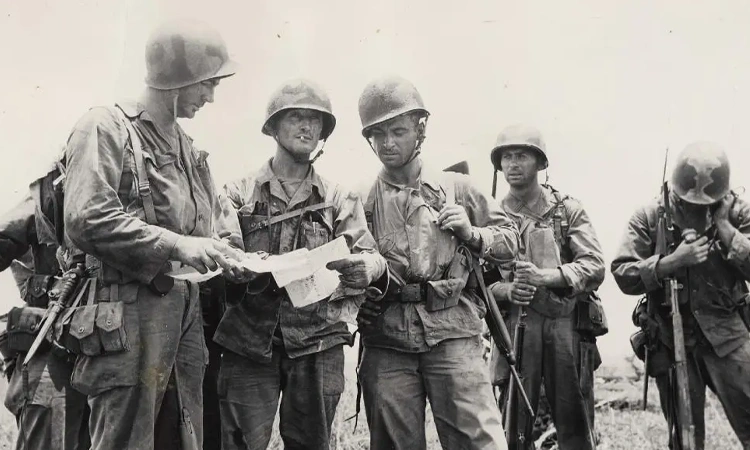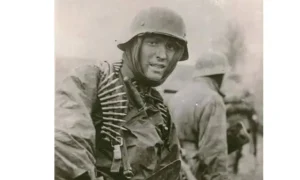World War II? Oh man, nothing else even scratches the surface. This wasn’t just some old school scrap between armies nope, this was humanity basically throwing everything in the blender and hitting purée. People love to yap about generals and politicians, but c’mon, that’s barely the start. The real punch in the gut? The human toll, hands down. That’s the part you can’t shake.
Look at the American losses for a sec. Not just numbers some teacher rattles off while you doodle in your notebookthese were actual people. Like, teenagers barely old enough to shave, moms, dads, neighbors, that kid from down the street. Real folks, yanked out of their lives, tossed into the madness from the blood-soaked sand at Normandy to some godforsaken island in the Pacific where the mosquitoes probably had better odds than you did. Every time you crack open a story from that war, it bleeds heartbreak and guts.
So, here’s the plan: let’s drag those numbers into the light, slap some faces on ‘em, and show how the hurt still lingers. When you see the casualty counts, it shouldn’t just be a history lesson it’s a gut check about what it took to keep that flag up there. Heavy stuff? Yeah, you bet.
Let’s get into it. Losing so many Americans didn’t just tilt the scales in the war; it straight up rewired the whole world. Those stories? They’re not locked up in some dusty museum they live on in the junk we keep, in the family tales, in the stuff we refuse to forget. Honestly, letting that memory fade? Not happening.
WWII Military Vehicles On Miltrade.com
🇺🇸 Total American Casualties in World War II
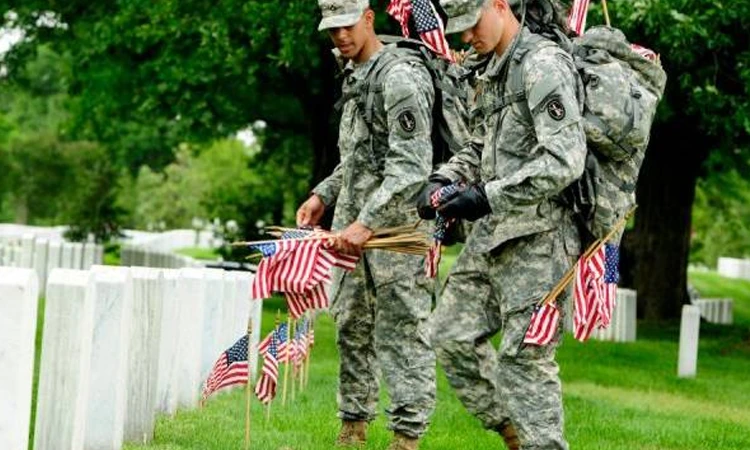
Honestly, the numbers just blow my mind over 16 million Americans thrown into the madness of World War II. Think about that for a second. From storming beaches that looked straight out of hell to sweating it out in some endless desert, these folks went through stuff most of us can’t even picture. The heartbreak wasn’t just on the front lines, either. Whole families back home got hit hard moms, dads, kids all feeling the aftershocks for years. It wasn’t just soldiers who paid the price; the fallout just kept rippling out, messing with entire communities. Wild, right?
Over 400,000 American military deaths
Out of all those folks, about 292,000 actually got killed in combat. The rest? Yeah, not so much think freak accidents, disease, weird stuff nobody warns you about when you sign up for war. Kinda grim.
Then there’s the wounded over 670,000 of them. That’s a stupidly huge number. Most of those people just had to, I don’t know, figure it out and live with whatever injuries they ended up with. Not exactly something you just slap a band-aid on and call it a day, right?
Step back and look at the whole mess, and you realize it hit like 1% of the country’s population at the time. Seriously, picture it: one out of every hundred people. That’s bananas. You don’t bounce back from that cleanly no way. And it’s not just about the bodies; the mental wreckage? Yeah, that stuff sticks around a long, long time.
Military Deaths by Branch:
- U.S. Army: Approximately 220,000 were killed, most in battle. The Army took the lion’s share of casualties, particularly in Europe and the Pacific.
- U.S. Navy: About 60,000 died, including the devastating loss of over 3,500 sailors on the battleship USS Arizona in the attack on Pearl Harbor.
- U.S. Marines: About 19,000 Marine Corps personnel were killed in combat, the majority of whom died during the intense fighting at Iwo Jima and Okinawa.
- U.S. Army Air Force: The highest most dense casualty rate of all the branches, with 52,000 servicemen lost in bombing runs over Europe and the Pacific.
Civilian Casualties:
Honestly, compared to the chaos over in Europe and the Pacific, the U.S. got off pretty light when it came to civilian casualties. Still, around 1,700 Americans lost their lives think stuff like the Japanese balloon bombs drifting across the sky or, obviously, the attack on Pearl Harbor. Most of the time, civilians got caught up in air raids or naval attacks, but, let’s be real, most of the destruction was aimed at military stuff, not regular folks.
The Psychological and Long-Term Impact:
Man, the pain wasn’t just on the front lines far from it. PTSD, messed up emotions, dads and brothers and sons who never made it home, that stuff hit every corner of America. You couldn’t walk down a street without feeling it. Families got torn up, futures got flipped upside down, and honestly? Some folks are still carrying that weight, decades later. Whole generations changed because of those losses. It’s wild how deep that kind of hurt can run.
US Military Vehicles On Miltrade.com
Breakdown of Casualties by Military Branch
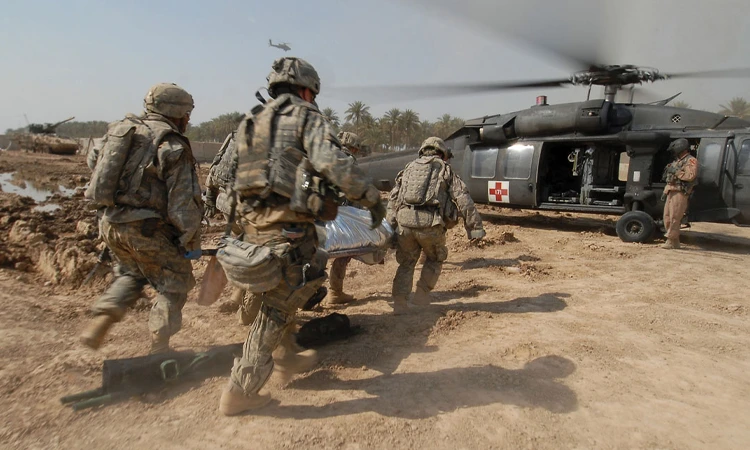
Man, WWII was chaos on all sides like, every corner of the globe had some kind of mess going on. And the U.S. military? Each branch basically had its own flavor of hell to deal with. You can’t just look at the casualty numbers and call it a day; that’s way too simple. The Army, Navy, Marines each one got hit differently, depending on where they were fighting and what crazy missions they got thrown into. So yeah, let’s get into the nitty gritty of who paid the biggest price, branch by branch.
American WWII Deaths by Branch: Combat Losses, Campaigns, and Collector Value
| Branch | Combat Deaths | Key Campaigns | Collectible Relevance |
|---|---|---|---|
| U.S. Army | 220,000 | D-Day, Battle of the Bulge | Dog tags, helmets, field gear on MilTrade |
| U.S. Navy | 60,000 | Pearl Harbor, Midway | Uniforms, ship insignia, photo sets |
| U.S. Marines | 19,000 | Iwo Jima, Okinawa | Rifle slings, medals, jungle-worn gear |
| U.S. Army Air Force | 52,000 | Europe bombing runs, Pacific raids | Flight suits, oxygen masks, mission patches |
| Civilians | 1,700 | Pearl Harbor, balloon bomb incidents | Rare homefront memorabilia on MilTrade |
U.S. Army: The Spine of the Battle
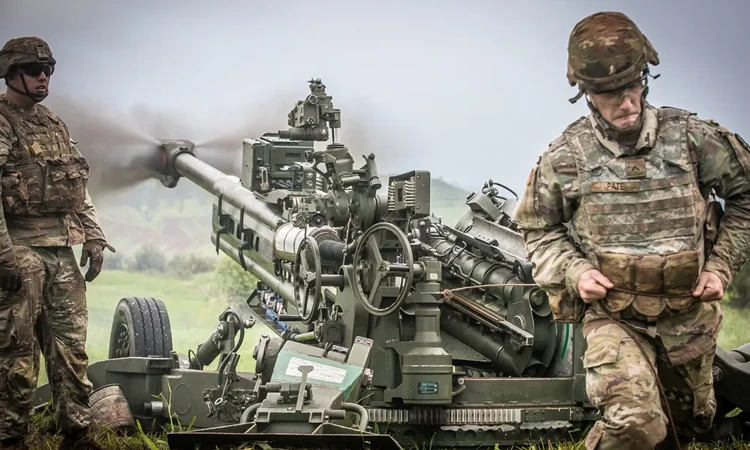
- Casualties: Around 220,000 American soldiers were killed in action. The U.S. Army bore the bulk of ground combat, especially in the European Theater and island hopping in the Pacific.
- Key Battles & Campaigns:
D Day (June 6, 1944) was one of the largest amphibious assaults in history, where the Army faced bitter opposition from German forces.
The Battle of the Bulge (1944 45), the biggest land battle ever undertaken by the U.S. Army, saw heavy casualties as the Nazis launched a final bid to break through Allied lines in Belgium.
- Impact: As most of the combat troops were engaged, the Army’s casualty numbers reflect the magnitude of battles fought and exposure to hostile fire in the battlefield.
U.S. Navy: Protecting the seas and shores
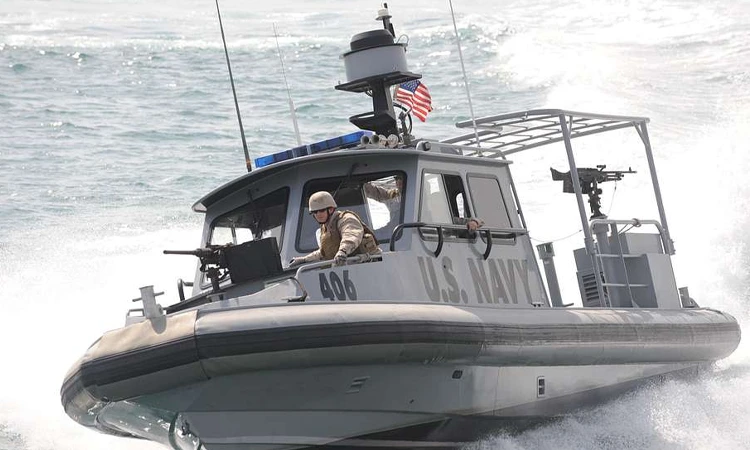
- Casualties: Approximately 60,000 dead, including sailors who died in the attack on Pearl Harbor and in the major naval battles across the Pacific.
- Major Battles & Campaigns:
oPearl Harbor (December 7, 1941): The surprise attack by Japan on a U.S. naval base killed over 2,400 American servicemen and brought the U.S. into the war.
o Battle of Midway (June 1942): A turning-point sea battle in the Pacific, during which the U.S. Navy sank four Japanese aircraft carriers, at great expense.
- Impact: Not only did the Navy have to protect vital sea lanes, but it also led the offensive assaults on o o the Axis powers. The disastrous losses at sea highlighted the risks faced by seafarers, particularly in battles like Midway and the island-hopping campaign in the Pacific.
U.S. Marines: Elite Combat Forces
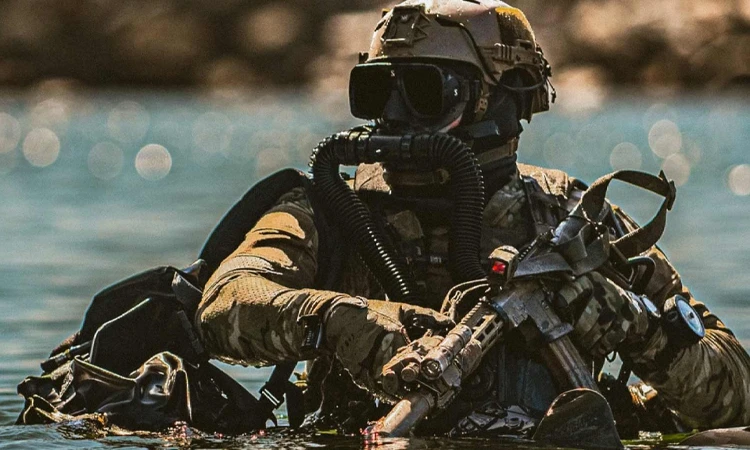
- Casualties: The Marines lost about 19,000 men, most notably in the brutal island-hopping campaigns in the Pacific.
- Key Battles & Campaigns:
oBattle of Iwo Jima (February 1945): A very bloody battle for the U.S. Marine Corps, with nearly 7,000 Marines killed as they captured the island.
o Battle of Okinawa (April 1945): Over 12,000 Marines died in the amphibious assault to capture the island, one of the last big battles before the Japanese surrender.
- Impact: The Marines were crucial in the Pacific. Their high casualty rate reflects the viciousness of their missions, for they led many attacks and secured important islands.
U.S. Army Air Force: The Air Warriors
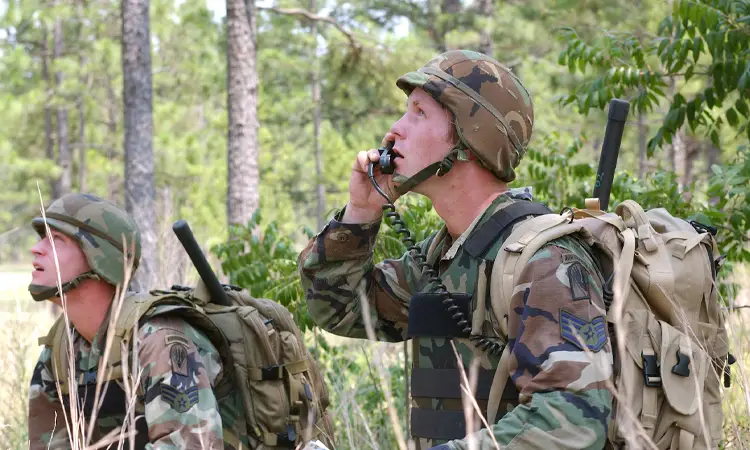
- Casualties: The Army Air Forces (AAF) had the highest casualty rate of all the branches, losing 52,000 airmen in bombing raids over Europe and the Pacific.
- Key Missions:
o Strategic Bombing Campaigns: These were large raids over Germany, bombing industrial areas, military bases, and civilian infrastructure to incapacitate the Nazi war machine.
o The U.S. also bombed industrial centers and major cities of Japan in bombing runs, usually using B-17 Flying Fortress and B-29 Superfortress bombers.
- Effect: Air operations were often faced with strong resistance from enemy fighters and anti-aircraft guns. Airmen, especially in daylight bombing raids, suffered high casualties, but their role in bringing the war to a conclusion was certain.
Civilian Casualties in the U.S.
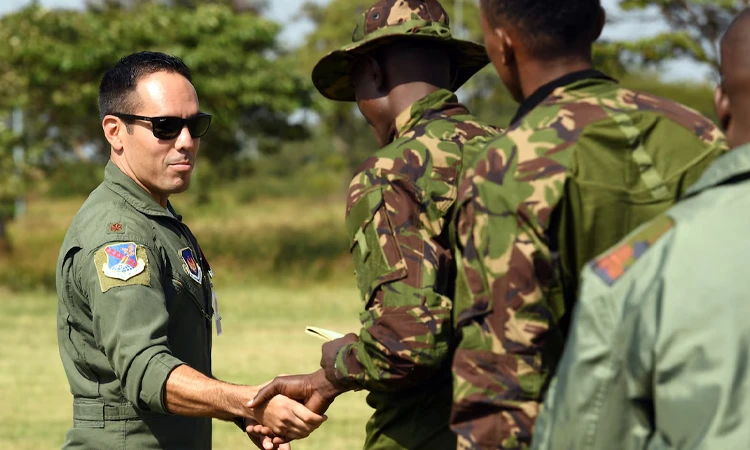
You know, whenever folks bring up U.S. casualties in World War II, the convo always circles back to the soldiers. Every. Single. Time. But yeah, civilians caught some shrapnel too not even close to what people in Europe or Japan went through, but still, it wasn’t nothing. Numbers wise? Not crazy high, I’ll give you that. But try telling that to someone who lost their mom, or their kid, or their neighbor. Doesn’t exactly feel small, does it?
And Pearl Harbor… please, everyone’s heard that one. Country got rocked over 2,400 people gone in a flash. Not just military guys either; some regular, everyday folks too. So much for that “safe at home” vibe, right?
Oh, and here’s something wild: the Japanese legit floated balloon bombs across the freakin’ Pacific. I mean, that sounds like a Looney Tunes plot, but it actually happened. A handful of people out West got killed or hurt just random, unlucky souls. Add it all up, and you end up with maybe 1,700 civilian deaths stateside. Doesn’t sound like a lot compared to, say, London during the Blitz, but every single one? That’s someone’s whole world, man.
But hey, body counts are just one part of it. The real gut punch? The stuff you can’t tally. Families torn up. Moms hugging goodbye, not knowing if they’d ever see their sons again. PTSD weaving into the fabric of American living rooms for years and years. Daily life got weird ration cards, blackout curtains, always waiting for the next thing to go sideways (or come floating out of the sky, apparently). The anxiety? You could practically smell it, thick as smog. And that vibe, that collective ache? Didn’t just vanish when the war ended. It stuck. It changed people. Maybe still does.
Comparing WW2 Casualties with Other Wars
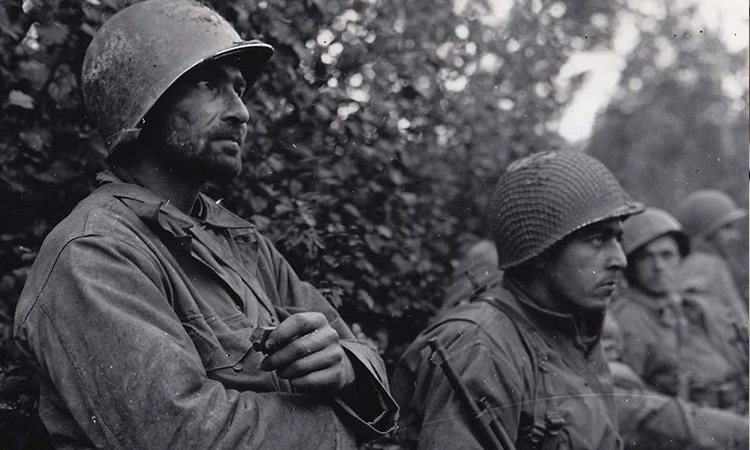
Okay, let’s not sugarcoat it WWII was a full blown catastrophe. You look at the numbers and it’s like, what the hell, humanity? The U.S. lost about 400,000 troops, which is enough to fill a city, but then you remember the Civil War clocked in at around 620,000 deaths (and that’s a messy stat, by the way, because it’s both sides and half of those guys probably died from bad soup or whatever passed for medicine back then). Vietnam? Yeah, 58,000 Americans still a massive tragedy, don’t get me wrong, but compared to WWII, it’s peanuts. It’s like comparing a backyard barbecue to the Super Bowl.
But the real punch in the gut? WWII just steamrolled civilians. I mean, we’re talking 50 million dead, easy. And that’s conservative some estimates go even higher, which, frankly, is just absurd. That’s not a number, that’s a glitch in the simulation. Your brain just sort of throws up its hands and refuses to do the math. For context, WWI killed 16 million people, and everyone thought the apocalypse had arrived. Then WWII came along and said, “Hold my beer.”
Bottom line: WWII is basically the gold standard for human misery. Every other war is just playing catch up in the horror department.
Final Thoughts
Honestly, it’s wild how we throw around numbers when talking about World War II, like it’s just data. But every single person lost? That was someone’s sibling, someone’s kid, a neighbor, or a friend. It tore holes in families and entire towns stuff people still feel, even now, decades later. Doesn’t matter if you were in the trenches or just trying to get by at home WWII messed with everyone. The grief, yeah, it’s massive, but there’s this stubborn resilience too, and a fight that wasn’t just about borders, but about people refusing to give up.
And when we talk about remembering, it’s not just about rattling off headcounts. It’s about the lives, the faces, the actual stories. That’s why people obsess over old dog tags, uniforms, or scribbled letters those things make it real. Sites like Miltrade.com? They’re not just selling history they’re making sure it doesn’t just fade away into textbooks. So, yeah, we keep these scraps and memories around, not because we love war, but because we can’t afford to forget what it really cost.
FAQs
Was every branch of the U.S. military struck equally hard during WWII?
No, not exactly. The Army was struck the hardest, especially in Europe and the Pacific. Interestingly enough though, I’ve read that the Army Air Forces suffered the highest casualty rate. Places like Miltrade enabled me to piece that together just by seeing how scarce bomber crew gear is these days.
Why are some WWII artifacts, like Navy dog tags or Marine helmets, collectible?
It’s not age. It’s the history behind them. I bought a dented Navy dog tag on Miltrade one time that had a D-Day veteran’s name still readable engraved on it. That’s not metal this is memory in your hand.
How do collectors even verify something’s WWII and not a reproduction?
Good point. I too used to be a skeptic until I mastered reading the indicators manufacturer marks, wartime use, even rust marks. Miltrade even provides item histories and photos that inform you what is real and what is make believe.
Why are people so interested in WWII casualties nowadays?
Because they weren’t statistics–they were everybody’s. My own granddaddy’s unit was nearly wiped out in France. Each uniform or letter on Miltrade reminds me that someone existed and perished for something bigger than themselves.
Where can I actually go to obtain authentic WWII artifacts related to those casualty records?
That’s the icing on the cake. Estate sales are useful, of course, but places like Miltrade are a treasure trove. I have once found an AAF flak vest with documented mission history it still smelled of oil and age. That’s the sort of thing you don’t forget.
